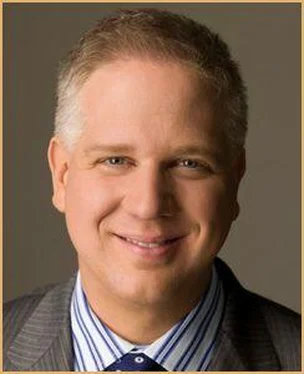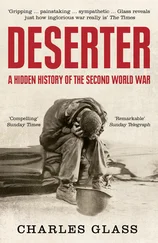If the mobs seized that arsenal, Shepard’s men would be cut to ribbons against them. So might General Lincoln’s new contingents. If they made it all the way to Boston and overtook the State House . . . well, he couldn’t even bring himself to think what might happen then.
And that was why William Shepard was marching his men through snow, ice, and cold to seize and secure that arsenal before Shays and Day finally thought of it.
But Shepard was already too late.
Daniel Shays and Luke Day had thought of it.
Parsonage of the First Church of West Springfield
West Springfield, Massachusetts
Four months earlier: September 1786
Even the most agitated of the Regulators grappled with the question: could their rebellion really succeed? Those who thought it could were left with another question even more difficult to answer: Was this rebellion just ?
The Regulators certainly had their grievances. Boston called the tune, and the rest of the state danced to it. Restrictive property ownership regulations kept good men from serving in public office. Squalls and storms often kept western Massachusetts representatives away from the capitol during key legislative votes. Still, this was not 1775 or 1776. There was representation now, imperfect as it might be.
Was it right to rebel against a lawful, elected government? Should our fight be in the State House instead of the streets?
The questions gnawed at Luke Day, and that is why he found himself seeking out the Reverend Dr. Joseph Lathrop, minister of West Springfield’s First Church. Lathrop was a man Day respected and trusted. So, after finding him at the church, Day shared a secret: He and his men were going to march on the arsenal across the Connecticut River in Springfield, seize it, and kick over the whole rotten cabal in Boston.
“You’re wrong, Luke,” Lathrop said.
“Well . . . no . . . I . . . I’m . . . not!” Day stammered, fidgeting with the brass buttons on his uniform coat as he spoke.
“You’re wrong,” chided the white-haired Lathrop, jabbing a bony finger into Day’s chest, “and you know it. Your very manner tells me you know it. A resort to arms for supposed grievances is wrong. And your men know it, too . The path down which you lead them will destroy them—and you as well. If you refuse and rebel, ye shall be devoured by the sword.”
The conversation ended abruptly, there was not even a terse good-bye, but Lathrop’s words had found their mark. Luke Day might never admit it, but he was having second thoughts.
Daniel Shays’ Headquarters
Wilbraham, Massachusetts
January 24, 1787
Armies were on the march.
General Benjamin Lincoln had quickly assembled an army at Roxbury and was bringing it toward Springfield via Worcester. But the Regulators were marching, too. Three separate groups of them raced against time to head off Lincoln and seize the arsenal from General Shepard’s militia: Luke Day’s 400 men advanced from West Springfield; Captain Shays’ nearly 1,200 Regulators encamped near Palmer; and 400 Berkshire County men, led by Eli Parsons, another Revolutionary War veteran, marched from Chicopee. Combined, they had a huge size advantage over Shepard’s 1,100 men.
Shays hurriedly dispatched orders to Day and Parsons: rendezvous with him before the arsenal in the waning sunlight at 4:00 P.M. on Thursday, January 25.
The clock was ticking. Seize the arsenal before Benjamin Lincoln arrived to reinforce Shepard’s militia or do not seize it at all.
Zenas Parsons’ Tavern
Springfield, Massachusetts
January 24, 1787
The atmosphere in the normally sleepy town of Springfield was electric. From the snow-covered streets to the handful of businesses that dotted its commercial area, a sense of excitement and dread filled the town. Nowhere was this sense of foreboding greater than at Zenas Parsons’ Tavern.
While some towns had flocked to the Regulators’ cause, Springfield was not counted among them. Its citizenry had stubbornly held loyal to their elected government. They had no appetite for seizing courthouses or marching on arsenals.
They also, like most people across the states, carefully scrutinized strangers stopping at the local taverns, especially in times of rebellion and sedition like the one they found themselves in now.
“Who’s the bumpkin that just sauntered in?” whispered a man attired in brown. It was a cold night and he was wisely sitting near the blazing fireplace.
“Can’t say I know,” came the answer from a bearded man in blue. “But I do reckon that he came into town on the West Springfield road.”
His companion nodded wisely. Zenas Parsons’ newest customer wasn’t from these parts, and West Springfield was where Luke Day’s “troops” were quartered. One didn’t need to be Ben Franklin to figure out what that might mean.
The man in brown sauntered over to the tavern keeper to refresh his drink. While waiting, he engaged the curly-haired stranger in conversation. “Terrible day to be out,” he said.
“That’s why I’m in here. A little grog never hurt anyone in this weather—nor in any other sort of weather!” the stranger laughed.
“No, not at all,” said the man in blue, who was now standing on the stranger’s other side. “Hope you don’t have much further to go. Otherwise, you’ll need two glasses of grog!”
“No, not far. Just over to Wilbraham.”
Wilbraham was where Shays was encamped.
“Say,” said the man in blue, “it looks like the wind’s picking up out there. I wouldn’t head outside until it lets up. Maybe another ration of grog will do the trick—on me! We like to treat strangers proper here in Springfield.”
Several grogs later, the stranger was . . . groggy. A few more and he slumped over unconscious.
Quickly, the locals pawed through his coat. There, inside his pocket, was an envelope sealed securely with red wax.
A peek inside might very well be worth the price of a few glasses of grog.
Boston Post Road
Five miles from Springfield
January 25, 1787
“There’s a rider coming forward, sir . . . I think . . .”
“Yes, I think so, too,” answered Daniel Shays, though the descending snow made seeing anything a winter’s guessing game.
“Do you measure him as friend or foe, sir?”
Shays, at the head of his column of men, pulled his spyglass up to his eye. “Both.”
“Both, sir? How may that be?”
“Friend once. But now, I doubt it. It’s Captain Samuel Buffington. I served with him in the Massachusetts Line. I rather doubt he is here to discuss old times.”
Under cover of a gust-driven white flag of truce, Buffington advanced steadily toward his erstwhile comrade. Before reaching Shays, however, another Regulator intercepted him. “You want to see General Shays, I suppose.” Buffington indicated he certainly did.
“Be my guest,” came the reply. “Just know that if the matter isn’t settled by sunset, New England will see such a day as she never has before.”
Such arrogant chatter failed to frighten Buffington. As he continued toward Shays, he wondered who had promoted the man to such an exalted rank. When he saw Shays’ own greeting—a pistol in one hand, a drawn sword in the other—he got the feeling that these mobbers were taking themselves a little too seriously.
Two can play this game , he thought. Buffington’s first words virtually slapped Shays across the face. “I’m here,” he pronounced, “in defense of the country you are endeavoring to destroy.”
“If you are in defense of the country,” Shays shot back, “then we are both defending the same cause.”
“I expect we have differing views on what that means,” Buffington countered.
Читать дальше












